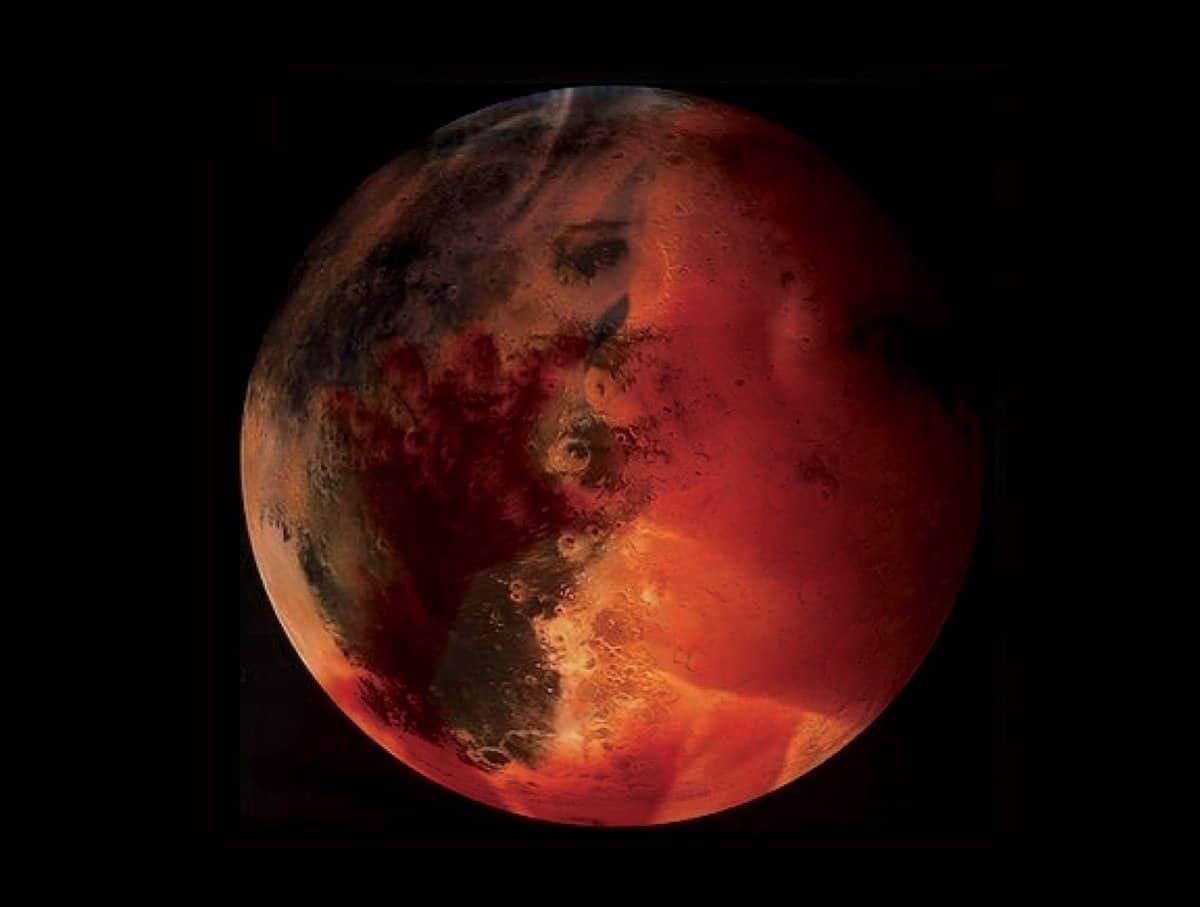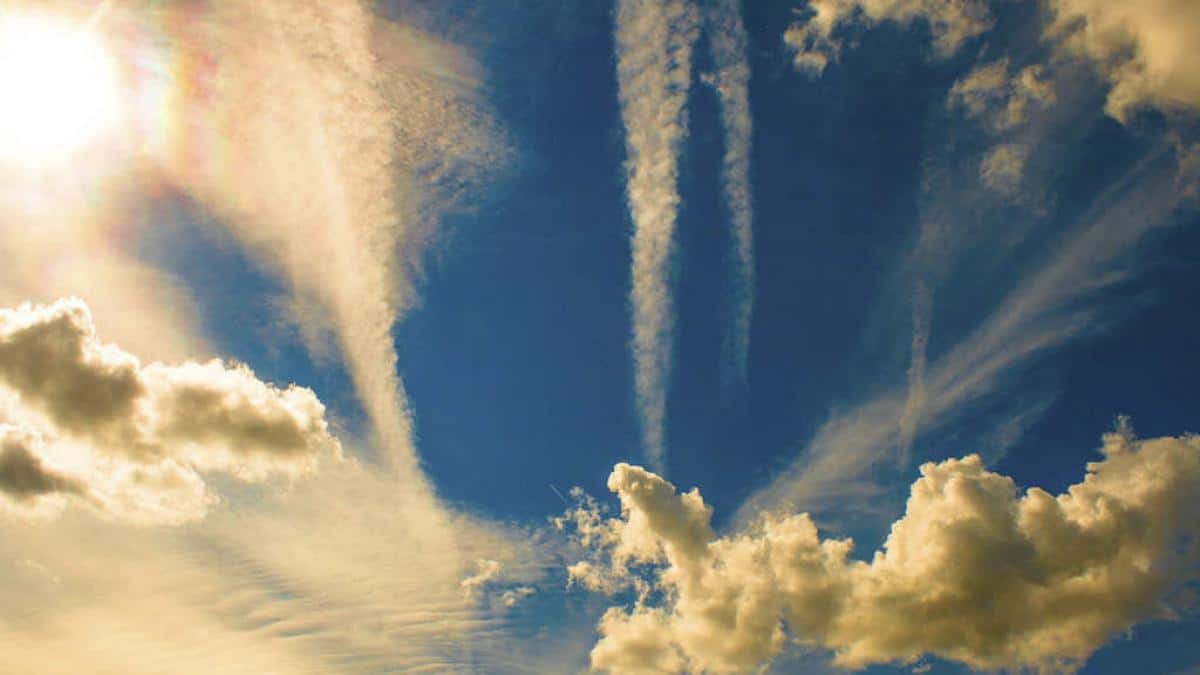
The atmosphere that surrounds our planet has not always had the current composition. Since the beginning of the formation of our planet the primitive atmosphere its composition has been changing over time depending on the characteristics of the planet and environmental conditions. We know that the atmosphere is nothing more than the layer of gases that surrounds a celestial body and that they are attracted to it by the force of gravity. They help us to protect ourselves from ultraviolet solar radiation, control the temperature and prevent meteorites from entering our planet.
Therefore, we are going to dedicate this article to tell you everything you need to know about the primitive atmosphere and how it was created.
Primitive atmosphere

We are talking about a set of gases that is surrounded by our planet since they are attracted by the action of gravity. It is a layer of gas that it protects us from the sun and that without it life would not develop as we know it. On our planet, the atmosphere is currently composed of nitrogen, carbon dioxide, oxygen and argon. To a lesser extent, it is made up of water, which is what makes up the clouds, and other compounds such as dust, pollen, respiratory residues and combustion reactions. We know that our atmosphere is more than gases, dust, and water. If in this atmosphere life on earth would not be possible.
The main mission is to protect ourselves from ultraviolet solar radiation and control its temperature. In addition, it helps us prevent the entry of large meteorites on our planet. We know that not all the atmospheres of the planets that make up the solar system are the same. There are some that are deeper such as that of Saturn, which It has 30.000 kilometers from the base to the last stage. On the other hand, that of our planet is three times smaller, being about 10.000 kilometers deep.
Layers of the atmosphere

The truth is that the atmosphere defines many surface conditions that we encounter. They are all different. Our atmosphere has 4 distinct layers. We have the troposphere which is rich in oxygen, water vapor. It is in it where most of the meteorological phenomena that we know occur, including rains, winds and snow. To reach this altitude at the end of the troposphere you need a specialized aircraft capable of reaching great heights.
The second layer of the atmosphere is known as the stratosphere. It is a dry place where there are no meteorological phenomena. The planes cannot get there since there is not enough air to support them. However, hot air balloons can come. They are followed by the mesosphere. It is the layer through which shooting stars pass. When we want to see the typical hunted ones, we have to know that they pass through the mesosphere. They are meteoroids that have disintegrated in the penultimate stage of the atmosphere and pass through here.
The thermosphere is the penultimate layer of Earth's atmosphere in which the Northern Lights occur and shuttles orbit. Finally, there is the exosphere. It is one that, together with the other layers, protect terrestrial life irregularly. Its main function that of protecting ourselves from the gamma rays that come from the sun.
Creation of the primitive atmosphere

The primitive atmosphere it was created approximately 4.500 billion years ago. The process of formation of the primitive atmosphere can be divided into 4 stages. The first thing to keep in mind is that it has not always been the ideal environment for the formation of life. Our planet did not have this ideal environment for the development of life. Earth 4.500 ago was a very geologically active planet. There were great volcanic emanations that were in charge of creating the primitive atmosphere. This atmosphere was composed of water vapor, carbon dioxide, sulfur, and nitrogen. At this point in the formation of the early atmosphere, oxygen was barely present and oceans did not exist.
In the second stage of formation we see that, as the planet cools, the water vapor could condense and reported to the oceans since it rained for a long time. As the water fell, carbon dioxide reacted with rocks in the earth's crust to create carbonates. These carbonates are essential for the formation of life and for the seas to be salty as is the case today.
The third stage takes place approximately 3.500 billion years ago. This is where the bacteria appear, they are capable of photosynthesis. Saying, these bacteria are capable of producing oxygen. This production of oxygen facilitated the development of life in the marine environment. Once the atmosphere had enough oxygen, a fourth stage began. At this stage we find the atmosphere and a set of many environmental variables that are responsible for creating the necessary conditions for the evolution of large organisms. From all this evolution, animals capable of breathing air are born.
Changes in composition
Various compositions from the primitive atmosphere to the reign on our planet depending on the geological period in which we find ourselves. We are talking about compositions that vary between an atmosphere with a reduction in the percentage of oxygen in proportion to the rest of the gases. Nitrogen has always been present since it is a gas that is considered inert since it does not react or it is very difficult for him to react.
In this way, we manage to reach the current atmosphere that contains the gases created in each of the previous stages that we have discussed. These gases are kept in continuous movement by the action of the winds and the rains. The main motor of the wind is the solar rays coming from the sun that cause changes in their densities. Thanks to these atmospheric dynamics, humans and other living organisms can breathe. Without these gases there would be no life on the planet.
I hope that with this information you can learn more about the primitive atmosphere and its formation.